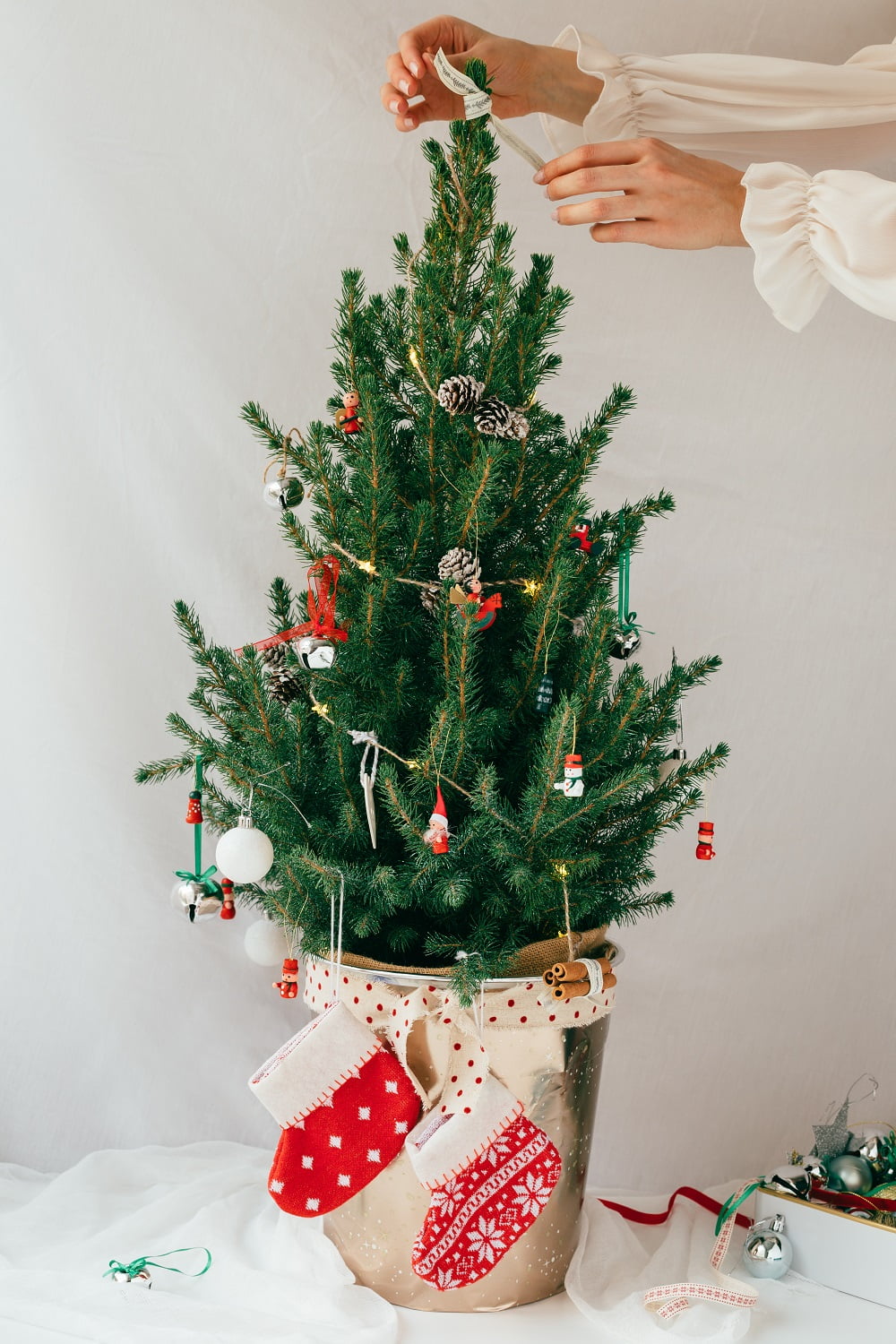Is it more environmentally friendly to go with an artificial or real Christmas tree? I’ve always wondered.
There are pros and cons to both sides of the debate. Those rooting for artificial trees argue that buying a fake tree eliminates the millions of trees that get clear-cut every year for Christmas. But those defending real trees point out that anything made out of plastic surrenders any validity in being ‘green’. So can we finally set the record straight and go home already?
Not exactly. You’ve got to consider factors like length of ownership, the distance travelled by your tree to get to you, disposal methods, and more. Hint: neither option is completely innocent.
Real Christmas Trees
PROS: Most Christmas trees these days are grown on plantations. Because there are a TON of Christmas tree plantations in Canada, it’s fairly easy to find a tree that’s been grown locally, which reduces transportation emissions and also supports your local farmers. When Christmas is over, a real tree can be mulched and used in gardens to feed plants, to insulate perennial plants, make DIY coasters, and more!
CONS: Even Christmas trees are vulnerable to the usual pests and growing problems that other plants deal with. For this reason, Christmas trees are often grown with pesticides. These chemicals are harmful to surrounding wildlife, bad for the health of the soil, and can sometimes contribute to indoor pollution of your home.
Fake Christmas Trees
PROS: Fake Christmas trees are relatively inexpensive, reusable, and less messy than a real tree.
CONS: Plain and simple, fake trees aren’t made of any organic compounds that we can safely recycle back into the Earth. Most fake trees are made from the plastic polyvinyl chloride (PVC), which like most plastics, will never decompose. Many artificial Christmas trees also contain the toxic chemical dioxin, lead, and hormone-disrupting plastic softeners known as phthalates.
Who wins?
A Quebec study cited by the David Suzuki Foundation researched this debate and found that in general, a real tree is a more environmentally friendly choice, but with exceptions. Their research found that an artificial tree has a smaller impact if you’re able to reuse it for at least 20 years, or if you would have to travel an incredibly far distance to pick up your real tree. However, their findings concluded that in most circumstances, an artificial tree has three times more of an impact on climate change and resource depletion than a natural tree.
So what green tips can we offer you?
- 1. If you’re buying a real tree
- – Find a local supplier
- – Choose trees from farms that use minimal, or no pesticides
- – Cut your own (with a permit)!
- – Recycle your tree after Christmas so it can be composted
- 2. If you’re buying a fake tree
- – Avoid PVC’s
- – Make it last 20 years!
- 3. Go treeless! Okay, okay, before you get out the knives and pitchforks, hear me out. You can still decorate your home to the nines, and you can still create a focal point within that holiday decorating to replace the tree. Consider buying an indoor-potted pine, decorating a house plant or something else in your house!
Everybody’s got their own holiday traditions, but people are incorporating environmentally friendly makeovers into their holiday routines more and more–vegnog, anyone? What I’m realizing is that a zero waste holiday is way simpler than I had thought, and while these changes may seem small, they are often very easy. Whatever type of tree you decide on this Christmas, use one that you can feel good about.
Happy holidays everyone!

















